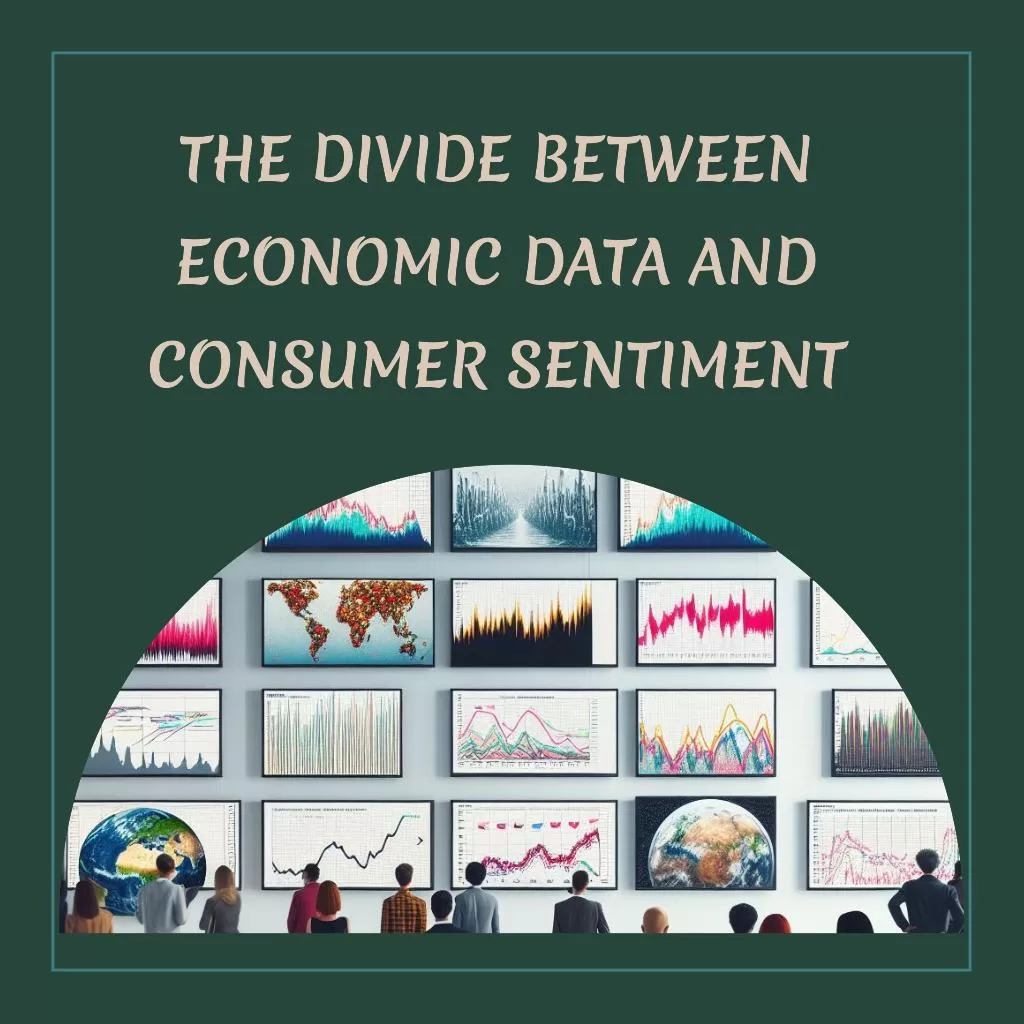In the realm of economic analysis, a curious dissonance often arises between official economic data and consumer sentiment indicators. While economic metrics such as GDP growth, unemployment rates, and inflation figures provide objective measures of economic performance, consumer sentiment surveys offer subjective insights into individuals’ perceptions and expectations regarding the economy. Despite their distinct methodologies and objectives, these two sets of data do not always align neatly, giving rise to questions about the nature of this divide and its implications for economic analysis. So, why doesn’t economic data always match consumer sentiment, and what factors contribute to this discrepancy? Exploring the Divide Between Economic Data and Consumer Sentiment

Methodological Differences:
One key factor contributing to the disparity between economic data and consumer sentiment lies in their respective methodologies and measurement techniques. Economic indicators are often derived from statistical models and data collected from various sources, providing a comprehensive overview of macroeconomic trends and conditions. In contrast, consumer sentiment surveys rely on self-reported responses from individuals regarding their perceptions of economic conditions, future outlook, and personal financial situations. As such, discrepancies may arise due to differences in sampling methods, survey questions, and respondent biases inherent in consumer sentiment surveys.
Lagging Indicators vs. Leading Indicators:
Another factor influencing the misalignment between economic data and consumer sentiment is the distinction between lagging indicators and leading indicators. Lagging indicators, such as GDP growth and unemployment rates, reflect past economic performance and tend to be more closely aligned with objective economic data. In contrast, consumer sentiment surveys often serve as leading indicators, providing insights into future consumer behavior and economic trends. As a result, shifts in consumer sentiment may precede changes in economic indicators, creating a temporal disconnect between the two data sets. Exploring the Divide Between Economic Data and Consumer Sentiment
Psychological and Behavioral Factors:
Consumer sentiment is influenced by a myriad of psychological and behavioral factors that may not always align with objective economic realities. Cognitive biases, emotions, and social influences can shape individuals’ perceptions and expectations, leading to discrepancies between subjective sentiment and objective economic conditions. For example, consumers may exhibit optimism or pessimism based on anecdotal experiences, media narratives, or peer influences, even in the absence of concrete economic indicators supporting their sentiments.
Structural Changes in the Economy:
Structural changes in the economy, such as shifts in employment patterns, technological advancements, and demographic trends, can also contribute to the divide between economic data and consumer sentiment. Rapid changes in the labor market, for instance, may lead to disparities between unemployment rates and individuals’ perceptions of job security or income stability. Similarly, technological disruptions and globalization can alter consumer behavior and expectations, further complicating the relationship between economic data and sentiment. Exploring the Divide Between Economic Data and Consumer Sentiment
Implications for Policy and Decision-Making:
Understanding the gap between economic data and consumer sentiment is essential for policymakers, businesses, and investors seeking to make informed decisions in an uncertain environment. While economic data provide valuable insights into macroeconomic trends and conditions, consumer sentiment surveys offer unique perspectives on individuals’ attitudes and behaviors. Recognizing the interplay between objective economic realities and subjective perceptions can inform policy formulation, business strategies, and investment decisions, helping stakeholders navigate the complexities of the economy more effectively.
Conclusion:
The discrepancy between economic data and consumer sentiment underscores the multifaceted nature of economic analysis and the complexities of human behavior. While economic indicators provide objective measures of economic performance, consumer sentiment surveys offer subjective insights into individuals’ perceptions and expectations. By acknowledging the methodological differences, psychological factors, and structural changes shaping the divide between economic data and sentiment, stakeholders can gain a more nuanced understanding of the economy and make more informed decisions in an ever-changing economic landscape.
Learn more about accounts receivable factoring
Connect with Factoring Specialist, Chris Lehnes on LinkedIn
